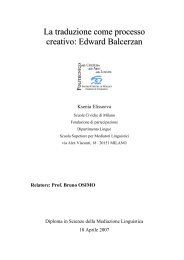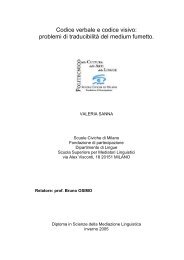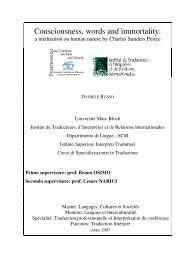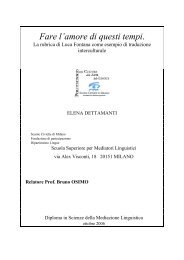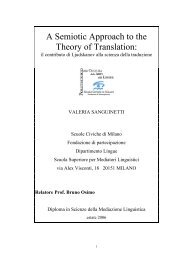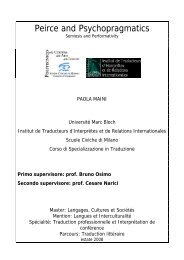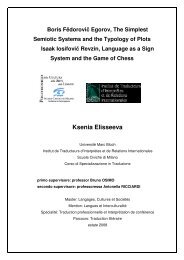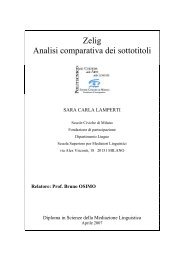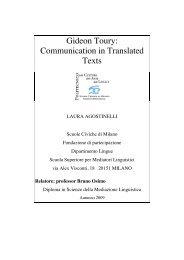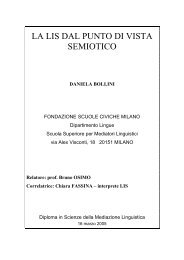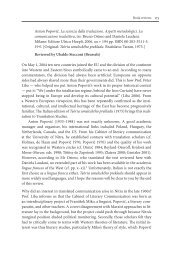Relatore: Professor Bruno OSIMO - Bruno Osimo, traduzioni ...
Relatore: Professor Bruno OSIMO - Bruno Osimo, traduzioni ...
Relatore: Professor Bruno OSIMO - Bruno Osimo, traduzioni ...
You also want an ePaper? Increase the reach of your titles
YUMPU automatically turns print PDFs into web optimized ePapers that Google loves.
That is, Lucy seemed to be trying to convey an image of a highly efficient and<br />
competent translator, who is in absolute control of the situation. Certainly,<br />
had the quality of the translations not been assessed at all, Lucy’s behaviour<br />
would, on the surface, have supported the early hypotheses about professional<br />
behaviour in translation (cf. section 2. 4.), namely that professional translators<br />
rely on automatised processing and are able to sail through translation tasks<br />
quickly and effortlessly. However, none of the other professional translators<br />
performed the experimental translation task with similar ‘grace and ease’; on<br />
the contrary, they spent considerably more time and effort on it. Moreover,<br />
there were few instances in their protocols which could be categorised offhand<br />
as manifestations of role distancing.<br />
Goffman argues (1961: 130) that a person ‘who manifests much role<br />
distance may, in fact, be alienated from the role’, but the opposite may equally<br />
well be true, as ‘in some cases only those who feel secure in their attachment<br />
may be able to chance the expression of distance’. Without more information<br />
about the subjects, it is impossible to say conclusively what might have been<br />
the reason for the obvious manifestations of role distancing in Lucy’s<br />
behaviour, as opposed to their apparent absence from the other professional<br />
translators’ behaviour. However, Goffman contends that (1961: 102):<br />
Whatever the individual does and however he appears, he<br />
knowingly and unknowingly makes information available concerning<br />
the attributes that might be imputed to him and hence the categories in<br />
which he might be placed.<br />
On this basis, we can hypothesise that the differences in the professional<br />
translators’ behaviour may imply that they wished (unconsciously) to convey<br />
different images of their roles as translators,<br />
62



